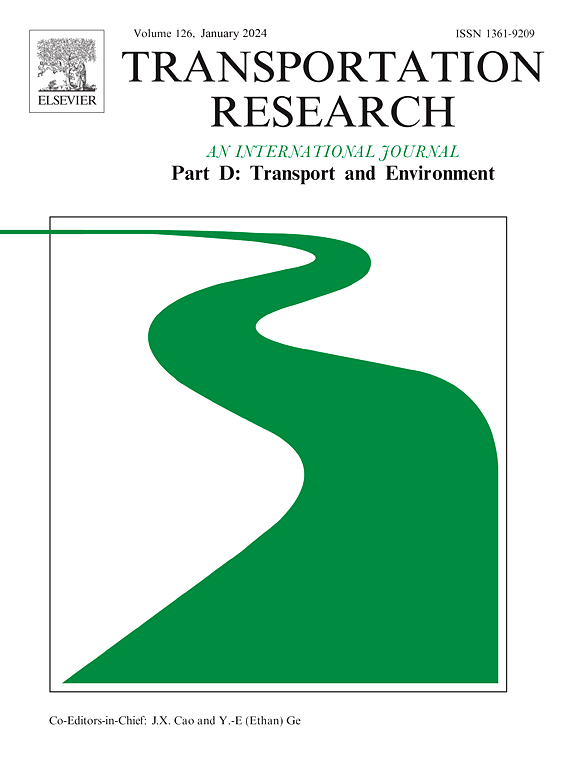Eco-friendly waterborne SrAl2O4:Eu2+, Dy3+ luminous road markings: Preparation method with enhanced durability
IF 7.7
1区 工程技术
Q1 ENVIRONMENTAL STUDIES
Transportation Research Part D-transport and Environment
Pub Date : 2025-04-05
DOI:10.1016/j.trd.2025.104728
引用次数: 0
Abstract
Pavement markings are vital for traffic safety, directly impacting the safety of road users. Traditional marking paints face significant issues, including high volatile organic compound (VOC) emissions and poor visibility at night, which contribute to environmental pollution and compromise driving safety. Therefore, an innovative composite silicon film coating technology was proposed, and the strontium aluminate (SA) (SrAl2O4:Eu2+, Dy3+) powder with good water resistance and organic compatibility was successfully realized. On this basis, through orthogonal tests and road performance verification, we developed a durable and eco-friendly water-based energy storage luminous pavement marking coating. The test results showed that the initial brightness value and 8-hour brightness value of the waterborne coating are 21.5 % and 50.0 % higher than those of the hot-melt coating, respectively, and its adhesion, skid resistance, and VOC emission are far superior to the specification requirements. This research result provides powerful guidance and support for sustainable traffic construction.
环保型水性SrAl2O4:Eu2+, Dy3+发光道路标线:增强耐久性的制备方法
道路标志对交通安全至关重要,直接影响道路使用者的安全。传统的标线涂料面临着严重的问题,包括挥发性有机化合物(VOC)排放量高,夜间能见度低,这些都会造成环境污染,危及驾驶安全。为此,提出了一种创新的复合硅膜涂层技术,成功制备了具有良好耐水性和有机相容性的铝酸锶(SA) (SrAl2O4:Eu2+, Dy3+)粉体。在此基础上,通过正交试验和路用性能验证,研发出耐用环保的水性储能夜光路面标线涂料。试验结果表明,水性涂料的初始亮度值和8小时亮度值分别比热熔涂料高21.5%和50.0%,其附着力、防滑性和VOC排放均远远优于规范要求。该研究成果为可持续交通建设提供了有力的指导和支持。
本文章由计算机程序翻译,如有差异,请以英文原文为准。
求助全文
约1分钟内获得全文
求助全文
来源期刊
CiteScore
14.40
自引率
9.20%
发文量
314
审稿时长
39 days
期刊介绍:
Transportation Research Part D: Transport and Environment focuses on original research exploring the environmental impacts of transportation, policy responses to these impacts, and their implications for transportation system design, planning, and management. The journal comprehensively covers the interaction between transportation and the environment, ranging from local effects on specific geographical areas to global implications such as natural resource depletion and atmospheric pollution.
We welcome research papers across all transportation modes, including maritime, air, and land transportation, assessing their environmental impacts broadly. Papers addressing both mobile aspects and transportation infrastructure are considered. The journal prioritizes empirical findings and policy responses of regulatory, planning, technical, or fiscal nature. Articles are policy-driven, accessible, and applicable to readers from diverse disciplines, emphasizing relevance and practicality. We encourage interdisciplinary submissions and welcome contributions from economically developing and advanced countries alike, reflecting our international orientation.

 求助内容:
求助内容: 应助结果提醒方式:
应助结果提醒方式:


